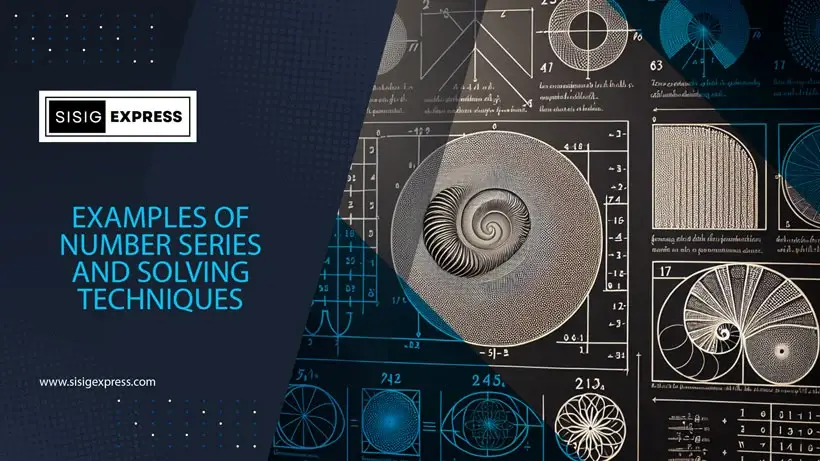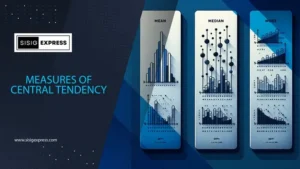
Ready to become a pattern-detecting ninja? Number series questions are all about spotting the secret sequence in a list of numbers to find the missing piece. With a bit of practice and a knack for recognizing these sneaky patterns, you’ll be acing this section in no time!
Dive into this article for a treasure trove of number series examples and foolproof solving strategies. By the time you’re done, you’ll be cracking those exam questions that pop up time and again like a pro! Let’s get those brain gears spinning!
Table of Contents
What’s a Number Series or Sequence?
Imagine it as a secret club where each number follows a special rule to join the lineup. Each member of this club is called a term.
Take for example the series: 2, 4, 6, 8, 10… What’s the secret handshake here? Simple! Just add 2 each time.
Now, let’s play a game with number series. Consider this challenge:
19, 22, 25, 28, _
What number fits perfectly in the blank? First, spot the pattern. Here, every number grows by 3:
19 + 3 = 22
22 + 3 = 25
25 + 3 = 28
Following this rule, the missing number is 31 (because 28 + 3 = 31).
This little adventure shows why it’s crucial to crack the code behind the sequence. Without knowing the pattern, finding the missing number would be like finding a needle in a haystack! Next, we’ll dive deeper into common patterns you might encounter in exams, turning you into a number series sleuth!
Common Patterns in Number Series and Sequences
- Arithmetic Sequence: It’s like adding the same number over and over. Start with 5 and keep adding 3: 5, 8, 11, 14, 17, …
- Geometric Sequence: This one’s about multiplication. Start with 5 and keep doubling it: 5, 10, 20, 40, 80, …
- Recursive Sequence: Each number is the sum of the two before it. It starts slow but gets big fast: 1, 3, 4, 7, 11, 18, 29, …
- Alternating Sequence: This tricky pattern alternates multiplying and adding: Start with 3, multiply by 3, then add 2, and repeat: 3, 5, 15, 17, 51, …
- Perfect Square Number Pattern: These numbers are perfect squares. Just square the count: 1, 4, 9, 16, 25, 36, …
- Perfect Cube Number Pattern: Like squares, but cubed. Get ready for some big jumps: 1, 8, 27, 64, …
- Triangular Number Pattern: Each number is the sum of all the numbers up to that point: 1, 3, 6, 10, 15, …
- Prime Number Pattern: No divisors here, only prime numbers: 17, 19, 23, 29, …
- Increasing Difference Pattern: Each step increases the gap a little more than before: 5, 7, 10, 14, 19, …
- Decreasing Difference Pattern: Here, each step reduces the gap a bit: 72, 70, 67, 63, 58, …
1. Arithmetic Sequence
Think of an arithmetic sequence as a conga line where each person steps forward by the same distance as the person before. This step size is known as the common difference.
For example, check out this sequence:
34, 39, 44, 49, 54, …
Here, each number hops forward by 5, making it a classic arithmetic sequence because each term is just the previous term plus 5.
But wait, the common difference can be a party pooper too! It can be negative, which means instead of stepping forward, you step backward:
14, 12, 10, 8, 6, …
In this backward sequence, each number is 2 less than the one before it.
Let’s Solve Some Puzzles!
Sample Problem 1: What comes next in this sequence? 94, 97, 100, 103, _?
Solution: This sequence is adding 3 each time. So, just add 3 to 103, and voilà! The next number is 106.
Sample Problem 2: Fill in the blanks: 9, 15, , 27, ?
Solution: This sequence jumps by 6 each time. So, add 6 to 15 to get 21, and add 6 to 27 to get 33.
And there you have it! The missing numbers are 21 and 33.
Understanding these patterns is like learning a dance move; once you get the steps, you can groove through any number sequence problems that come your way!
2. Geometric Sequence
Imagine a geometric sequence as a magic multiplying act where each number grows or shrinks by a constant factor, known as the common ratio.
Just like a rabbit pulled from a hat, each number in the sequence transforms by multiplying itself by this magical common ratio, which can be either a positive or a negative number.
For example, let’s look at this sequence:
2, 8, 32, 128, …
Here, each number multiplies by 4 to get the next one. That makes 4 the common ratio for this sequence.
Time to Crack Some Numbers!
Sample Problem 1: What number fits into the blank to complete this sequence? 3, 15, 75, __?
Solution: This sequence multiplies each number by 5. So, to find the missing term, multiply 75 by 5. Ready? 75 x 5 = 375. There you have it, 375 is the missing number!
Sample Problem 2: What comes next? 72, 36, 18, __
Solution: This sequence has a shrinking spell, using a common ratio of ½ (every number is half of the previous one). So, what’s half of 18? Just divide it by 2 and you get 9.
And just like that, the missing number is 9.
Geometric sequences are like a chain reaction in numbers, where each term triggers the next. Once you spot the multiplier (or divider), you’re all set to predict the future of the sequence!
3. Recursive Sequence
Imagine a recursive sequence as a thrilling relay race where each runner (term) passes the baton (value) to the next one based on a special rule involving the previous runners. It’s all about teamwork here!
A famous example is the Fibonacci sequence, where each new number is the sum of the two preceding ones. It’s like a buddy system where each number needs the help of its two previous friends to show up at the party.
Here’s how it rolls:
1, 1, 2, 3, 5, 8, …
To find “2”, you add the two “1s” before it. To get “8”, you add “3” and “5”. It’s like each number is the child of the two numbers before it!
Let’s Solve Some Mysteries!
Sample Problem 1: What’s the next guest arriving at this party? 2, 6, 8, 14, 22, __
Solution: This sequence loves adding the last two numbers to invite the next one. So, “14” and “22” got together and invited “36” (because 14 + 22 = 36).
Sample Problem 2: Who’s the mystery guest before “6”? __, 6, 10, 16, 26, …
Solution: To find out who came before “6”, we see that “10” was the result of adding “6” and the mystery guest. So, if we backtrack, the mystery guest is “4” (because 10 – 6 = 4).
Recursive sequences are like puzzles where each piece connects to the previous ones. Once you know the rule, you can build the sequence piece by piece—or number by number!
4. Alternating Sequence
Let’s talk about the alternating sequence, a playful mix of mathematical operations that take turns like kids on a playground slide! Sometimes they add, sometimes they multiply, and the pattern keeps switching.
Here’s a fun example:
3, 8, 16, 21, 42, …
In this sequence, the numbers dance between addition and multiplication:
- 3 + 5 = 8 (we just added 5)
- 8 x 2 = 16 (now we multiply by 2)
- 16 + 5 = 21 (back to adding 5)
- 21 x 2 = 42 (and multiply by 2 again)
Let’s Solve a Brain-Teaser!
Sample Problem: What comes next in this number dance? 6, 7, 21, 22, 66, _
Solution: This sequence loves to switch things up by alternately adding 1 and multiplying by 3:
- 6 + 1 = 7 (add 1)
- 7 x 3 = 21 (multiply by 3)
- 21 + 1 = 22 (add 1 again)
- 22 x 3 = 66 (and multiply by 3)
Since we just multiplied by 3, it’s time to add 1 again:
- 66 + 1 = 67
Ta-da! The missing number is 67.
Alternating sequences are like a game of math tag—you never know if it’s going to be a sprint (multiplication) or a small step (addition) next!
5. Perfect Square Number Pattern
Imagine a sequence where each number is a superhero, and their power is to multiply themselves! This is the magic of the Perfect Square Number Pattern, where every term is a number squared.
For example, if you take the square of 9, you get 81 because 9 times itself is 81.
Here’s a cool lineup of these self-doubling heroes:
4, 16, 36, 64, 100, …
This squad represents the squares of even numbers from 2 to 10:
- 2 x 2 = 4
- 4 x 4 = 16
- 6 x 6 = 36
- 8 x 8 = 64
- 10 x 10 = 100
Let’s Crack a Numeric Code!
Sample Problem: What’s the next hero in this sequence? 1, 9, 25, 49, _?
Solution: This sequence features the squares of the odd-numbered heroes.
- 1 x 1 = 1 (the smallest hero)
- 3 x 3 = 9 (a little bigger)
- 5 x 5 = 25 (growing stronger)
- 7 x 7 = 49 (even more powerful)
Next up is the odd hero after 7, which is 9. Let’s see their power:
- 9 x 9 = 81
And there you have it! The next mighty number hero is 81.
Perfect square sequences are like a superhero assembly line, where each number reveals its power by squaring up against itself!
6. Perfect Cube Number Pattern
Welcome to the world of Perfect Cube Number Pattern, where numbers show off their strength by multiplying themselves not once, not twice, but three times! It’s like a strength training session for numbers.
For example, the cube of 2 is 8 because when 2 gets tough and multiplies itself three times (2 x 2 x 2), it transforms into 8.
Let’s roll out some of these muscular numbers:
1, 8, 27, 64, 125, …
This lineup shows the cubes of the first few whole numbers:
- 1³ = 1 x 1 x 1 = 1
- 2³ = 2 x 2 x 2 = 8
- 3³ = 3 x 3 x 3 = 27
- 4³ = 4 x 4 x 4 = 64
- 5³ = 5 x 5 x 5 = 125
Time to Flex Our Math Muscles!
Sample Problem: What heavyweight number comes next in this sequence? 1, 8, 27, 64, 125, _?
Solution: This sequence is all about cubing up the whole numbers. After 5, the next number in line is 6. Let’s pump up 6 to its cube:
- 6³ = 6 x 6 x 6 = 216
Boom! The next Herculean term in our cube sequence is 216.
Perfect cube sequences are like watching numbers become superheroes of their own mathematical gym, bulking up by multiplying themselves over and over!
7. Triangular Numbers Pattern
Step right up to the fascinating world of Triangular Numbers Pattern, where numbers come together to party in a triangle! Imagine building a triangle with tiny party dots—each layer adds more guests to the fun.
Take this intriguing sequence for example:
1, 3, 6, 10, …
Each number represents a triangle made of dots:
- 1: A single dot.
- 3: A dot at the top, and two below it, forming a tiny triangle.
- 6: Imagine stacking another row of three dots under the first triangle, making it bigger.
Building Bigger Triangles
How do we keep the party growing? Each new triangle adds an extra dot on each side. So, if you have a triangle with 3 sides, the next one will have 4.
Let’s Add More Party Dots!
Sample Problem: What’s the next big bash in this sequence of triangular parties? 1, 3, 6, 10, _?
How to solve it:
- 1 has 1 dot.
- 3 has sides of 2 dots.
- 6 has sides of 3 dots.
- 10 has sides of 4 dots.
So, if 10 is the party with 4 dots on each side, the next party should have 5 dots on each side. How many guests (dots) in total?
Let’s count:
- Start with 10 and add 5 more dots for the next layer, giving us 15.
Voilà! The next triangular number where the party is bigger and better is 15.
Triangular numbers are like layers of fun, where each new layer adds more excitement and more friends to the gathering!
8. Prime Number Pattern
Welcome to the exclusive club of Prime Numbers, where members are the coolest numbers on the block because they stick to their own unique rule: they can only be divided by 1 and themselves! It’s like having a VIP pass in the world of mathematics.
Here’s a sneak peek at some of the VIP members:
2, 3, 5, 7, 11, …
These numbers are the rock stars of the number world because they don’t mingle much (in terms of factors, that is).
Finding the Next VIP Member
Sample Problem: Who’s next in this elite lineup? 17, 19, 23, _
How to solve it:
- 17, 19, and 23 are all prime numbers. They’re part of the club because they only hang out with 1 and themselves.
- To find the next member, we need to scout for the next prime number after 23.
Let’s check out the candidates:
- 24, 25, 26, 27, and 28—sorry, you guys have too many friends (factors) to join the club.
- 29—congratulations, you’re in! You stick to the prime rule of only having two factors: 1 and yourself.
So, the missing term and the next VIP member of our prime number club is 29.
Prime numbers are like the puzzle pieces of mathematics, often hidden but always exciting to discover!
9. Increasing Difference Pattern
Imagine a fun game of leapfrog where each leap is just a bit longer than the last—that’s what’s happening in the Increasing Difference Pattern! In this number sequence, each number hops a bit further than the last, making the game more exciting as it progresses.
Here’s what it looks like:
1, 3, 6, 10, 15, 21, _
Each hop increases by just 1 more than the last:
- From 1 to 3, the jump is 2.
- From 3 to 6, the jump grows to 3.
- From 6 to 10, it stretches to 4, and so on.
The next hop after 21 needs to be 7 (since the last was 6), so:
- 21 + 7 = 28
Voilà! The missing term is 28.
Let’s Play More Leapfrog with Numbers!
Sample Problem 1: What’s the next number after this series? 15, 19, 24, 30, 37, _
Solution:
- The jumps here are 4, 5, 6, 7…
- Next, we leap by 8: 37 + 8 = 45
The next number is 45!
Sample Problem 2: Ready for another round? Find the next number after 54, 56, 60, 66, 74, __
Solution:
- Here, the leaps are increasing by 2s: 2, 4, 6, 8…
- Next leap? 10: 74 + 10 = 84
And there you have it, 84 is the next number!
This Increasing Difference Pattern is like watching numbers play a thrilling game, where each jump is a surprise and makes the sequence more interesting. Ready for the next jump?
10. Decreasing Difference Pattern
Welcome to the world of the Decreasing Difference Pattern! Think of it as a game of gently stepping down a staircase, where each step down is shorter than the last. It’s like easing into a comfy cushion at the end of a long day.
Here’s a peek at how this pattern plays out:
29, 26, 21, 14, _
Let’s break down the steps:
- From 29 to 26, we step down 3.
- From 26 to 21, we take a slightly bigger step of 5.
- From 21 to 14, it’s a step of 7.
Let’s Find the Next Cozy Step Down!
Sample Problem: What’s the next soft landing after 29, 26, 21, 14, _?
Solution:
- We’ve been stepping down more gently each time: 3, 5, 7…
- Next, we step down by 9 (since we’re reducing by 2s): 14 – 9 = 5
There you go! The next step down lands us at 5.
This Decreasing Difference Pattern is like a soothing descent, where each step is a gentle drop that feels lighter and more graceful. Ready to step down again?




